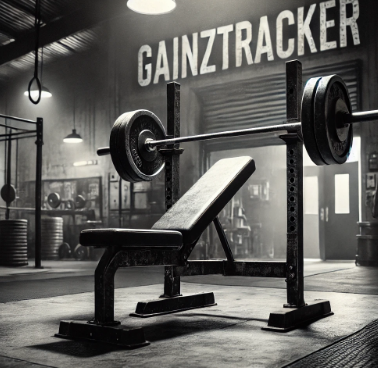Building a Bigger Stronger Chest with Progressive Overload
Published By GainzTracker, 26th September 2024

Understanding Progressive Overload in Chest Training
Introduction
The chest is one of the most prominent muscle groups in the upper body and plays a crucial role in pressing movements like bench presses, push-ups, and dips. To achieve a stronger, more defined chest, it is essential to apply the principle of progressive overload. This approach allows for continuous muscle growth by gradually increasing the demands placed on your chest muscles. In this article, we will explore how to apply progressive overload in your chest workouts and the steps you can take to ensure your pecs grow bigger and stronger.
What is Progressive Overload?
Progressive overload is the process of systematically increasing the workload during your workouts to stimulate muscle growth and strength. When applied to chest exercises, it involves incrementally raising the resistance, volume, or intensity of your training. Here are a few key ways to implement progressive overload for the chest:
- Weight: Gradually add weight to your chest exercises like the bench press or dumbbell press.
- Repetitions: Increase the number of repetitions performed at a given weight to enhance endurance and growth.
- Sets: Add more sets to your routine to increase the total volume and workload on your chest muscles.
- Time Under Tension: Slow down the tempo of your reps or include pauses to keep your chest muscles working harder for longer.
Benefits of Applying Progressive Overload to Chest Workouts
- Muscle Hypertrophy: Increasing the workload progressively encourages your chest muscles to adapt and grow larger over time.
- Enhanced Strength: As you increase the weight or intensity of your chest exercises, your pressing strength will improve, helping you lift heavier in future sessions.
- Improved Upper Body Aesthetics: Building a bigger, well-defined chest enhances your upper body proportions, contributing to a more balanced physique.
- Breaking Plateaus: Progressive overload helps prevent your chest development from stagnating by continuously challenging the muscles, avoiding plateaus.
How to Implement Progressive Overload in Chest Training
- Master Your Technique: Before increasing the load, ensure you have proper form on chest exercises like bench presses and push-ups. Keep your chest engaged, shoulders back, and lower the weight slowly for full muscle engagement.
- Track Your Workouts: Record your chest training routine, noting down the weight, sets, and reps performed. This will help you monitor progress and know when to increase the intensity.
- Increase Weight Gradually: Every 1-2 weeks, aim to add 2.5-5 lbs to your bench press or dumbbell exercises, or increase reps without sacrificing form.
- Vary Your Exercises: Incorporate chest exercise variations like incline presses, chest dips, or cable flyes to target different angles and stimulate comprehensive growth.
- Prioritize Recovery: Progressive overload can be taxing on your chest muscles. Ensure you allow proper rest and recovery, including rest days and adequate sleep, to maximize gains.
Conclusion
Building a bigger, stronger chest with progressive overload is key to achieving noticeable results in your upper body training. By gradually increasing the resistance, volume, or intensity of your chest exercises, you can continue making progress and achieve the chest growth you're aiming for. Always prioritize form, consistency, and proper recovery to unlock your full potential.
Call to Action
Are you ready to transform your chest? Start applying progressive overload in your chest training today, and witness your strength and muscle growth reach new heights!
Disclaimer: The information provided in this article is for educational purposes only and is not intended as a substitute for professional medical advice, diagnosis, or treatment. Always consult with a healthcare provider before beginning any exercise program. Use caution when performing exercises to avoid injury.